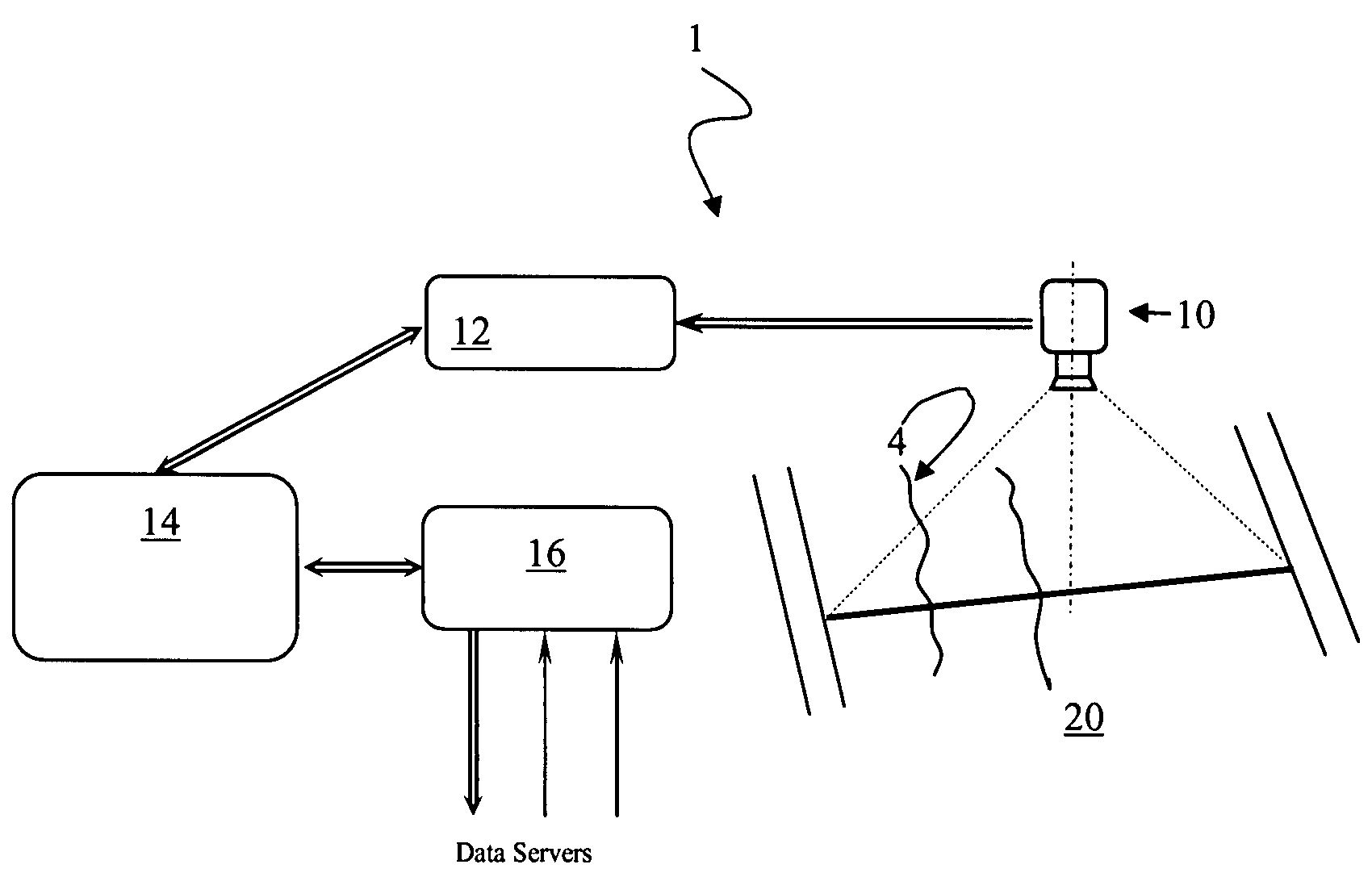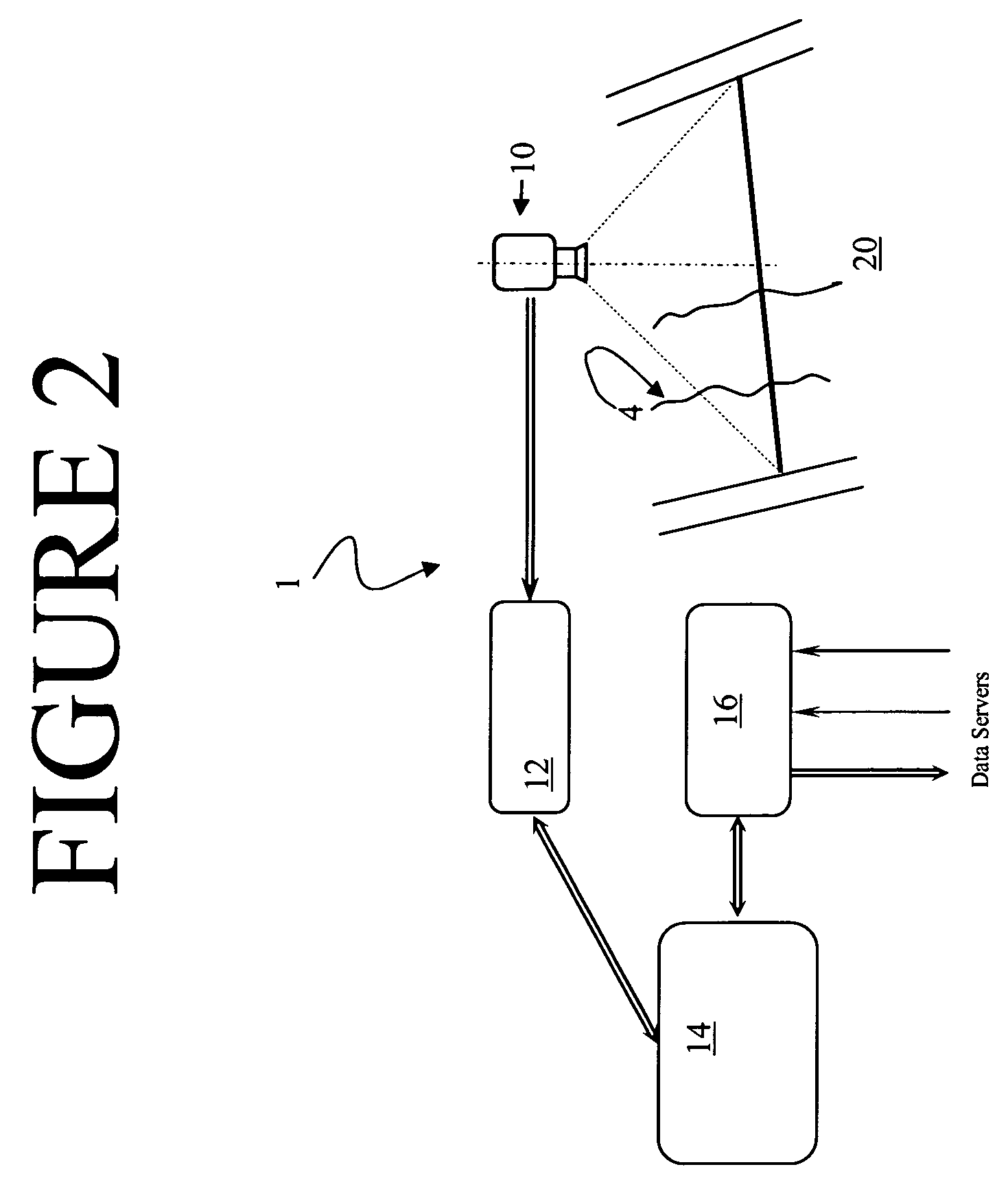Automated surface distress measurement system
a technology of automatic measurement and surface distress, applied in the direction of measuring arrangements, instruments, and variable devices, can solve the problems of heavy wear and/or environmental conditions on the surface of pavements, pavements, roads, etc., and accelerate the deterioration of the nation's road and highway infrastructure, so as to reduce the reliance on human judgmen
- Summary
- Abstract
- Description
- Claims
- Application Information
AI Technical Summary
Benefits of technology
Problems solved by technology
Method used
Image
Examples
Embodiment Construction
[0047]While the making and using of various embodiments of the present invention are discussed in detail below, it should be appreciated that the present invention provides many applicable inventive concepts that can be embodied in a wide variety of specific contexts. The terminology used and specific embodiments discussed herein are merely illustrative of specific ways to make and use the invention and do not delimit the scope of the invention.
[0048]Pavement surface distresses are common failures of pavement constructions. Among them cracking is a major causes jeopardizing road serviceability and requires prompt surface rehabilitation. From early 1970's, researchers started to use digital imaging technology To develop automated pavement surface distress inspection (hereafter referred to as “APSDI”) systems for pavement distress survey [1,3,4]. An APSDI system may reduce disturbance to the public traffic and road hazard to human inspectors during the survey. A true APSDI system need...
PUM
| Property | Measurement | Unit |
|---|---|---|
| size | aaaaa | aaaaa |
| speeds | aaaaa | aaaaa |
| width | aaaaa | aaaaa |
Abstract
Description
Claims
Application Information
 Login to View More
Login to View More - R&D
- Intellectual Property
- Life Sciences
- Materials
- Tech Scout
- Unparalleled Data Quality
- Higher Quality Content
- 60% Fewer Hallucinations
Browse by: Latest US Patents, China's latest patents, Technical Efficacy Thesaurus, Application Domain, Technology Topic, Popular Technical Reports.
© 2025 PatSnap. All rights reserved.Legal|Privacy policy|Modern Slavery Act Transparency Statement|Sitemap|About US| Contact US: help@patsnap.com



